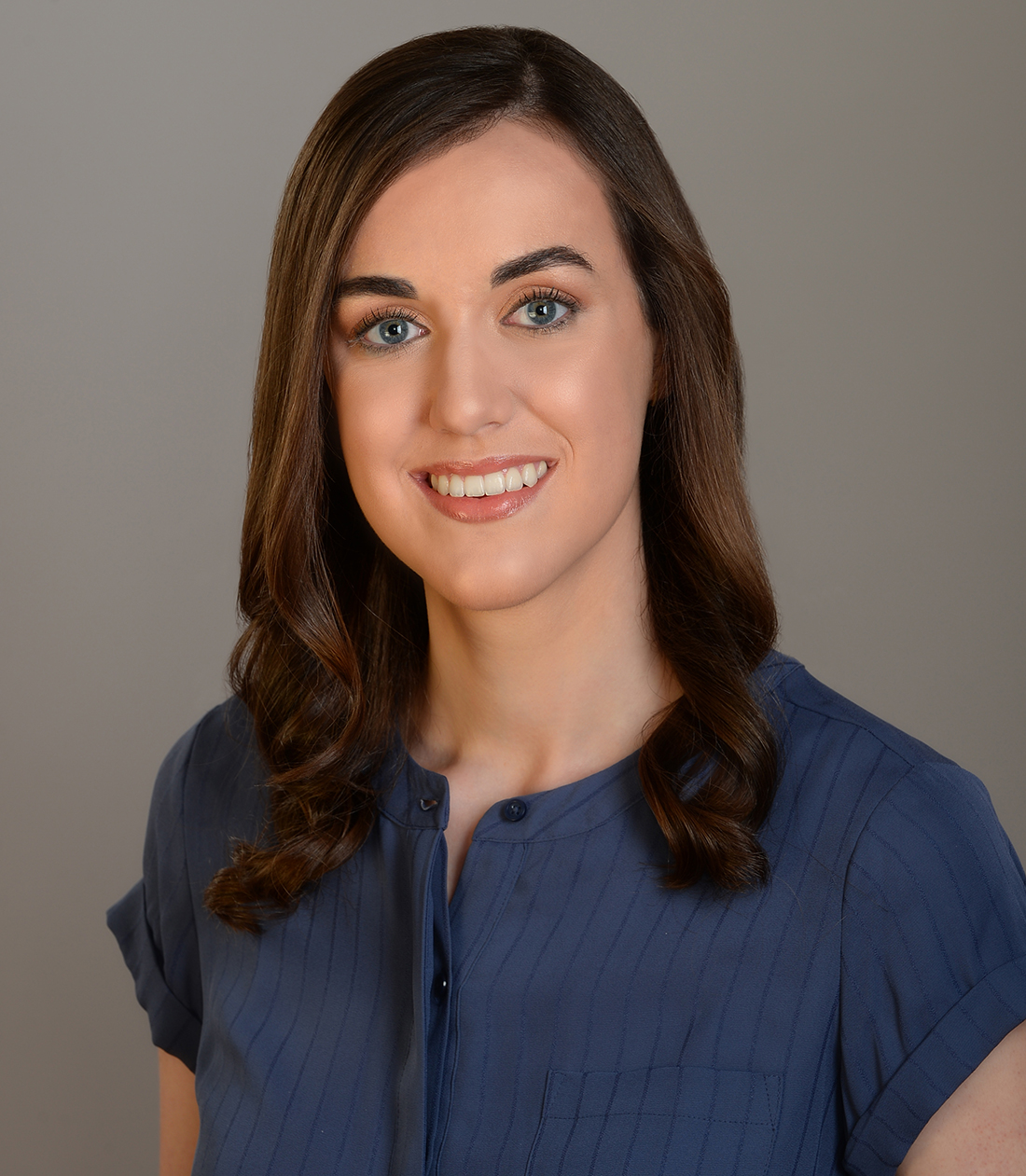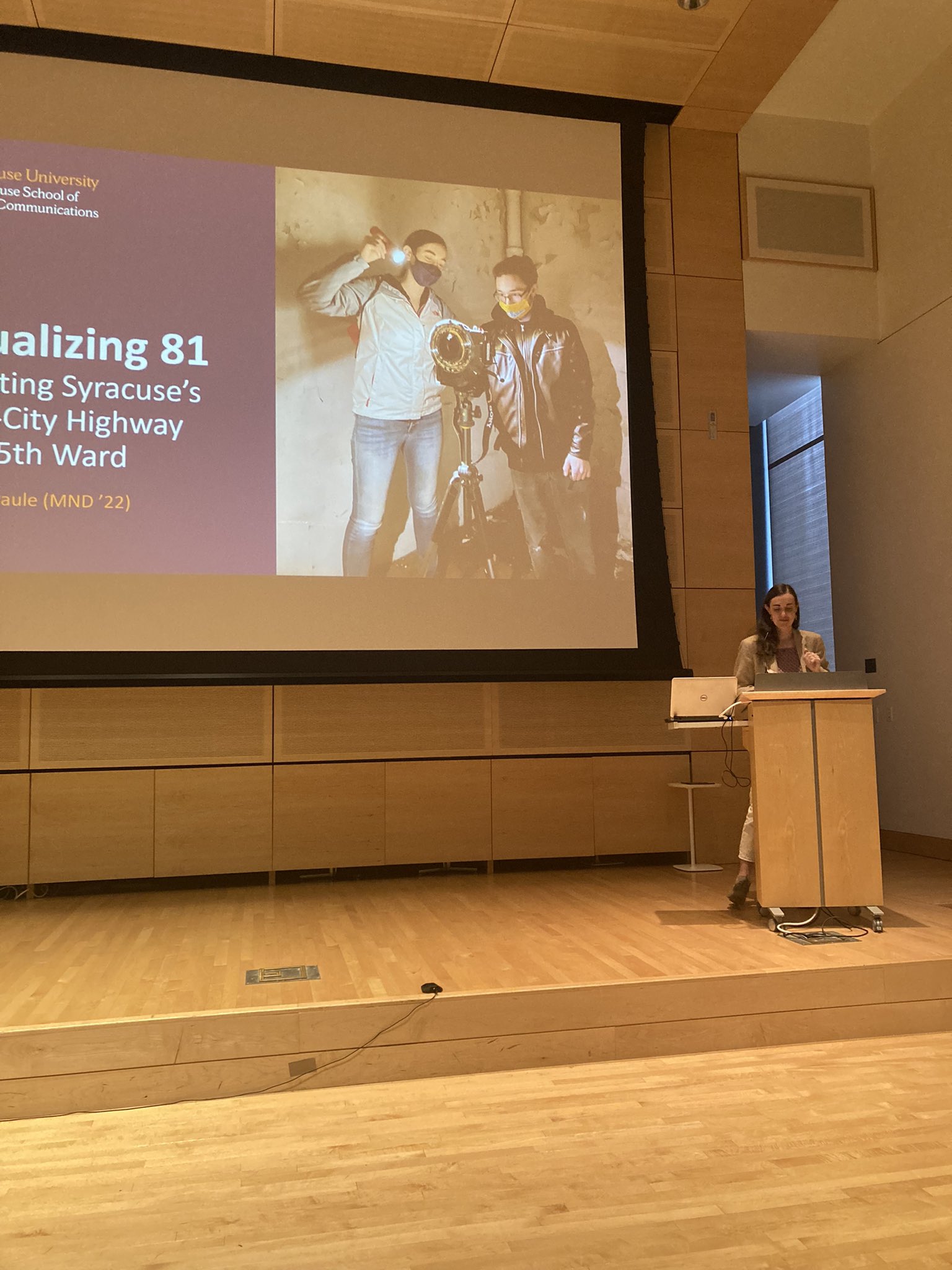Newhouse students use immersive media to visualize Syracuse history
A team of Newhouse students is telling the story of I-81 in Syracuse—and the communities it displaced—in a way that has never done before: by using immersive media.
The result is “Visualizing 81,” published on TheNewshouse.com.
The History
When President Dwight Eisenhower signed the Federal Aid Highways Act into law in 1956, Syracuse was changed dramatically. The bill funded Interstate-81, which in Syracuse was built on top of the 15th Ward, a once vibrant and thriving Black neighborhood. The new highway displaced many residents and disconnected the area from the rest of the city.
In a speech in Syracuse last year, New York Sen. Chuck Schumer referenced I-81 as he advocated for President Joe Biden’s infrastructure bill.
“[I-81] divided this wonderful city and contributed to the decline of neighborhoods in its shadows,” Schumer said.
The $1 trillion infrastructure plan has since been signed into law and will provide some funding for I-81 to be torn down and replaced with a community grid. However, despite what the bill means for Syracuse, there are already concerns that highways like I-81 will be repeated in cities across the country.
The Project
“Visualizing 81,” the immersive media project built by Newhouse students to understand I-81 in its full context, imagines the future of Syracuse’s infrastructure using the stories of its past. Dan Pacheco, Peter A. Horvitz Endowed Chair in Journalism Innovation, was the faculty adviser for the project and acted as a project manager and editor. He says the project was designed to help make its viewers conscious of what happened to help prevent the repetition of that history.
“‘Visualizing 81’ is a way for you to immerse yourself in the past, present and future of one the most important tragedies that ever happened in Syracuse and to do it in a way that takes you there,” Pacheco says. “You can literally step inside the oldest African American standing church in Syracuse because we used 3D technology to capture it. We wanted to remove the distance that people have from the past, so when people walk down the street, they remember vibrant communities were once there that were removed in order to then make our lives more convenient today.”
The initiative breaks down the history into six chapters and incorporates 360-degree imagery, historical photos, holographic capture of buildings and spaces, architectural models and virtual reality (VR) to tell the story. The decision to use such innovative immersive technology came from a need to cover I-81 in a new way.
Senior Amanda Paule was a junior when Jon Glass, executive producer of The NewsHouse, approached her and Sonny Cirasuolo ’21 about working on the project. Paule served as editorial lead and Cirasuolo as the visualizing and XR lead. While Paule was intimated by the scope of the project, she was excited about the opportunity to tell the story in a unique way.

“It is a story that calls for innovation, especially since it’s a story that’s been told so many times,” Paule says. “It was important for us to approach it in a way that brought something new and worthwhile to the story, which was this aspect of visualizing or generating spatial awareness of the topic. Other outlets that covered it, including local outlets and even The Washington Post and the Atlantic, haven’t necessarily been able to generate that.”
According to Pacheco, the spatial awareness that the team created in this story, particularly though VR, has a real impact on how people process the information.
“You can be embodied in the story. You actually feel like you’re there, and that you’re part of this story, too. That basically removes a lot of mental divides that you have about the story,” Pacheco says. “You remember something that’s not exactly real, but your body and your mind believe that you were there, so it creates empathy.”
Cirasuolo and Pacheco began working towards that goal in the summer of 2020. As Pacheco’s research assistant, Cirasuolo helped adapt the technology into a website format. Pacheco says this technology typically requires the viewer to download an app, which can create a barrier to the story for some people.
“Particularly [on the South Side of] Syracuse, people don’t have as much access to technology. Things like virtual reality? Forget it, but everyone has a phone,” Pacheco says. “So that is one reason we wanted to make sure you can go through the entirety of ‘Visualizing 81,’ which includes a lot of the VR and AR components, using only your phone.”

The Impact
It was particularly important to the team that the project was not something just about the South Side community, but also something for the community. Beyond making the story accessible on phones and in print in The Stand, the team behind ‘Visualizing 81’ made an effort to consult with community members and interrogate the team’s own possible biases.
Paule presented the work at a racial equity symposium on campus in February 2021 and used feedback and what she learned from other speakers to adjust the story. She also asked Evan Starling-Davis, a doctoral student and South Side native, to review the final piece and give feedback.
She remembers specifically one edit he gave about her use of the phrase “end of its useful life” in regard to I-81.
“He stopped at [the phrase], and he was like, ‘I have trouble thinking about the viaduct in terms of it having had a useful life in the context of all of this hardship, heartbreak, inequity and racialized problems that it caused.'” Paule says. “I ended up writing the same thing but without rehashing that phrase that in subtle ways perpetuated some mindsets about the viaduct that haven’t been productive. There were several semantic things like that that I think going through with Evan was meaningful, and really made this piece stronger.”
Paule says people she knows in the community have been excited by the project, particularly the content about the People’s AME Zion Church. The project has won AEJMC awards for writing and technical design. Both Paule and Pacheco say that funding they received from the Online New Association’s Journalism 360 Challenge and the Horvitz Endowed Chair in Journalism Innovation allowed them to pursue such an ambitious project. They also credit support from Assistant Professor Amber Bartosh and senior Lawry Bower from the School of Architecture and other Newhouse faculty, staff and students.
“I’ve definitely seen a strong interest from Newhouse in these kinds of projects, and just supporting student projects that try to push boundaries,” Paule says. “I found that Newhouse is really supportive of journalism research and innovation. I appreciated that they were willing to [support] not only professors and grad students, but also undergraduate work as well.”
The Future
While many of the students leading this project have graduated or will graduate this year, Pacheco isn’t done exploring the story. He wants to engage more with the South Side community and bring more attention to the history of I-81.
“This infrastructure bill, which I think is much needed, comes with the danger that this kind of thing could actually happen 100 times over,” Pacheco says. “When I saw [a Los Angeles times story showing the trend is continuing] I almost cried. We have to make conscious efforts to reverse that, and maybe journalism can come to the rescue. Journalists help people understand their world. I know that people can make better choices, but that starts with understanding, You can’t effect change in your life and our world if you don’t understand where the change needs to happen.”
Elizabeth Kauma is a senior in the magazine, news and digital journalism program at the Newhouse School.